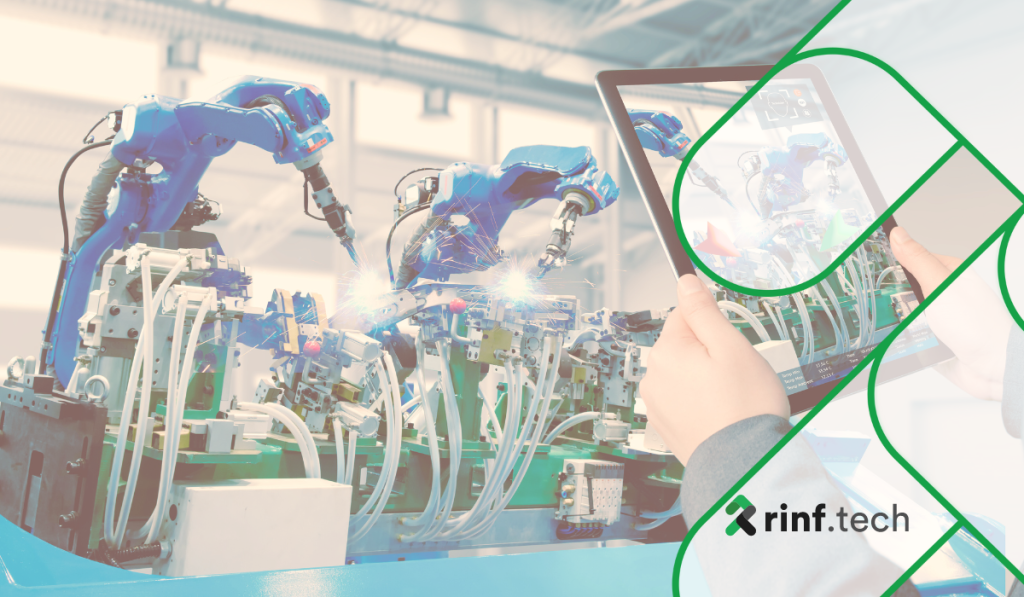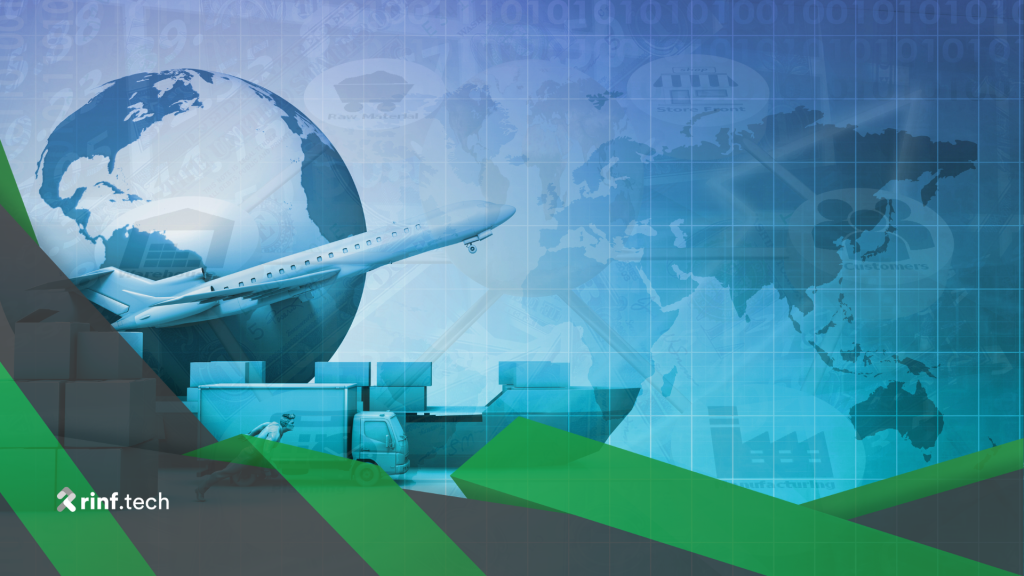
A Comprehensive Guide to Maximizing ROI on Workflow Automation Projects
Delving into the key concepts, benefits, and costs associated with workflow automation and offering practical tips for maximizing ROI.
Compounding these concerns are the impacts of geopolitical conflicts, wars, and the distinct challenges brought about by China’s major position in worldwide commerce. The urgency for adopting sustainable practices in logistics and supply chain management is increasingly clear. Given these circumstances, it is crucial to seek out efficient methods to improve and optimize supply chains. Automation stands out as a key technological development poised to transform supply chain and delivery processes through groundbreaking and effective approaches.
Recent trends indicate that there is a rise in demand across the supply chain industry, illustrating that global e-commerce and international trade is on growth path. For instance, global e-commerce sales are expected to hit $3,647.00 billion in 2024. This boom has led to the development of complex supply chain networks, that are enhanced by evolving consumer expectations for quicker deliveries.
The industry faces severe labor shortages, rising operational expenses, and constant pressure to adopt more sustainable systems. The logistics sector is a well-known major contributor to global greenhouse gas emissions and is under constant pressure to adopt greener practices. In this scenario, innovative solutions are needed to optimize supply chain and delivery systems. Automation emerges as a key player, having the potential to enhance these networks to reach a more sustainable, fast and optimized future.
By integrating advanced technologies such as AI, robotics, and IoT, automation aims to tackle these multifaceted issues effectively, improving efficiency, reducing costs, and supporting sustainable practices. As we explore the impact of automation in transforming supply chains and delivery systems, it becomes clearer that this technology is a critical element in global trades and logistics’ evolution.
This article focuses on how automation helps tackle the major issues in supply chain and delivery.
Key challenges within the constantly evolving landscape of supply chain management greatly affect its effectiveness and dependability. The emergence of automation technologies offers a vital chance to address these challenges, transforming them into drivers of efficiency and innovation.
Inefficiencies in supply chains are varied and often seen as lengthy processing times, poor inventory management, and delayed deliveries. Automation presents a powerful solution to these issues. For instance, Robotic Process Automation in warehouses can expedite inventory sorting and packaging. AI-driven software can refine supply chain routes for quicker transportation by analyzing real-time data on traffic, weather, and delivery schedules. Automated tools for predictive maintenance are also crucial, as they can foresee equipment issues, minimize downtime, and enhance overall turnaround times.
Human errors in supply chain management, such as incorrect data entry and miscommunication, can cause significant setbacks. Automation technologies like automated data entry systems can dramatically reduce these errors, ensuring greater accuracy. The deployment of IoT sensors throughout the supply chain offers real-time tracking and visibility, leading to more efficient transit monitoring and management of goods. Blockchain technology creates fixed transaction records, increasing transparency and trust. Automated alerts and decision-support systems can quickly identify potential problems, facilitating prompt resolutions and minimizing human error.
The capacity to swiftly adapt to market changes or disruptions is vital for a resilient supply chain. Automation, mainly through machine learning and AI, is instrumental in demand forecasting and inventory management. These technologies can process large data sets to anticipate market trends and consumer behavior, enabling proactive adjustments in inventory and operations. AI-powered scenario planning and simulation tools prepare organizations for various disruptions, aiding in developing effective contingency strategies. Moreover, automated collaboration platforms can improve communication and coordination across the supply chain, making it more agile and responsive to changes.
The incorporation of automation into supply chain and delivery systems brings a lot of transformative benefits. These advantages significantly enhance the operational efficiency of the supply chain and have far-reaching effects on business success, customer satisfaction, environmental sustainability, and competitive edge.
Automation significantly streamlines supply chain operations, improving efficiency across various processes. For example, automated warehouse systems can sort and transport products more quickly and accurately than manual labor, cutting down processing times and costs. In transportation logistics, AI and machine learning algorithms optimize routes and loads, saving fuel and reducing vehicle wear and tear. Automation in inventory management also helps avoid overstocking or stockouts, thereby minimizing waste and the costs of unsold inventory.
In the current market, customers expect rapid and reliable delivery. Automation helps businesses consistently meet these expectations. Automated warehouse sorting and packing enable quicker order processing, and AI-optimized delivery routes ensure faster deliveries. The accuracy of automated systems dramatically lowers the chances of order processing and delivery errors, boosting customer satisfaction. Additionally, real-time tracking and updates, facilitated by IoT and other automated technologies, improve the customer experience by offering transparency and continuous communication throughout the delivery process.
Automation aids in making supply chain operations more sustainable, addressing the growing environmental concerns in the market. Automated systems are typically more efficient and use less energy than traditional methods, reducing the carbon footprint of supply chain activities. Moreover, automation allows for better adherence to ethical sourcing standards by providing more visibility and control over the supply chain. This enables companies to ensure that their products are sourced and produced in alignment with their ethical and sustainability goals, thereby boosting their brand reputation.
The agility and responsiveness that automation offers give businesses a significant competitive advantage. Automated data analysis and AI-driven forecasting allow companies to adapt to market shifts and consumer trends swiftly. This quick response helps businesses capitalize on new opportunities and effectively manage risks, setting them apart from competitors relying on conventional supply chain methods. The capacity to adapt quickly to market changes and customer needs is a key differentiator in the dynamic global business environment.
Automated deliveries allow marketers to expand their target markets and build loyalty by sending recurring orders for perishable goods. They can also create brand positioning and set it apart from the competition with cost and speed of delivery and lower overheads to pass the savings on to the customer to improve purchase satisfaction.
Automated delivery will be the catalyst for the boom in the delivery business with subscription models. As such, savvy marketers will be tasked with stimulating public demand for subscription-based products that offer convenience and peace of mind for consumers on a “set it and forget it” basis.
Automation enhances the scalability and flexibility of supply chain operations, allowing businesses to easily adjust their operations in response to demand fluctuations or market changes. Automated systems can be scaled up or down without the need for significant time or investment in training new staff, enabling a more agile response to growth opportunities or downturns. This flexibility ensures that companies can maintain optimal performance levels regardless of market conditions, supporting steady growth and adaptation.
By automating key supply chain processes, companies can significantly reduce the risk of human error, which can lead to costly mistakes such as inventory mismanagement, order inaccuracies, or shipping delays. Automation also improves compliance with regulatory requirements by ensuring that processes are executed consistently and accurately, reducing the risk of fines or sanctions. Additionally, automated systems can enhance security measures, protecting against theft, loss, and cyber threats, further safeguarding the supply chain.
Automation facilitates the collection and analysis of vast amounts of data in real-time, empowering businesses to make more informed decisions. This data-driven approach can lead to optimizations in inventory levels, supply chain strategies, and customer service tactics. By leveraging analytics and insights generated by automated systems, companies can anticipate market trends, customer behaviors, and potential disruptions more effectively, enabling proactive rather than reactive strategies.
While automation may replace certain manual tasks, it also creates opportunities for workforce empowerment by reallocating human resources to more strategic, creative, and customer-focused roles. This shift can lead to higher job satisfaction, as employees are engaged in more meaningful and less monotonous work. Furthermore, automation provides staff with tools to perform their jobs more efficiently, such as predictive analytics for better decision-making and robotics for handling dangerous or physically demanding tasks, enhancing both safety and productivity.
While the benefits of automation in supply chain and delivery systems are considerable, implementing these technologies comes with challenges. Addressing these issues is essential for businesses to harness the potential of automation fully.
Integrating new automation technologies into existing supply chain systems poses significant challenges. Companies must carefully select technologies aligning with their needs and operational goals. This involves assessing various solutions, including robotics, AI, IoT, and blockchain, and understanding their integration into existing processes. Compatibility with legacy systems is crucial for smooth operations. The challenge is technical and strategic, as technological upgrades must align with broader business objectives and workflows.
As automation technologies advance, the skill sets needed to manage and operate these systems evolve. There’s a critical need for talent capable of working with advanced technologies, necessitating significant investment in training and development. Companies must reskill their existing workforce and attract new talent with technical expertise. Creating continuous learning environments and offering training programs are imperative, alongside managing the transition and addressing workforce concerns about automation potentially displacing jobs.
Relating digital technologies and data-driven processes in automated supply chains brings significant cybersecurity and data privacy challenges. Ensuring the protection of sensitive data and secure operations in a connected environment is vital. Robust cybersecurity measures are essential, such as secure data encryption, regular security audits, and stringent access controls. Businesses also need to navigate various data protection regulations, adding complexity to the management of automated systems.
Automation technology requires a substantial initial investment, including costs for technology acquisition, system integration, training, and maintenance. Businesses must carefully evaluate the ROI, considering both direct financial gains and indirect benefits like efficiency improvements, enhanced customer satisfaction, and competitive edge.
The ethical implications of automation in supply chains, particularly its potential impact on employment and job displacement, are significant. Companies should adopt responsible automation practices, considering the social implications and seeking ways to create new opportunities for the workforce. Furthermore, ensuring the responsible use of AI and machine learning to prevent biases or unfair practices is crucial in upholding ethical standards.
A premier truck transportation and delivery firm sought to develop a bespoke logistics automation system to enhance scalability, boost customer satisfaction and loyalty, and streamline courier services. They selected rinf.tech to spearhead this automation initiative.
Our tailor-made solution empowers the company to accurately inform their end-users about the scheduled delivery times while also offering recipients the flexibility to manage the delivery process. Furthermore, we have refined operations, enabling couriers to manage a greater number of tasks daily.
Looking ahead, the role of automation in supply chain and delivery is expected to undergo considerable growth and transformation. This evolution is propelled by rapid technological advancements, shifting market dynamics, and a growing focus on sustainability and efficiency.
The future will likely witness an increased integration of autonomous vehicles and drones in logistics and delivery. AVs, including self-driving trucks and vans, are set to revolutionize overland transportation by enhancing efficiency, reducing human-error accidents, and optimizing delivery routes. Drones offer innovative solutions for last-mile deliveries, particularly in urban or hard-to-access areas, potentially cutting delivery times and costs and avoiding conventional traffic obstacles. Drone technology is advancing towards carrying heavier loads over longer distances, which could open new avenues for remote area deliveries and emergency logistics. Meanwhile, AVs are expected to integrate deeper with smart city infrastructures, enabling smoother and more predictable traffic flows and reducing delivery times and environmental impact.
AI and machine learning will continue to lead in automating supply chains. Their roles in predictive analytics, demand forecasting, and inventory optimization are crucial for enhancing supply chain efficiency. AI advancements will bring more complex data analysis for highly accurate demand predictions and responsive supply chain operations. Additionally, AI’s role in risk management by identifying potential disruptions and suggesting countermeasures is invaluable.
Beyond predictive analytics and demand forecasting, AI and machine learning will revolutionize supply chain transparency and accountability. Through advanced algorithms, AI will enhance the traceability of products from origin to end-user, ensuring greater compliance with ethical standards and regulatory requirements. This will not only strengthen supply chain integrity but also support consumer demands for transparency and sustainability.
The Internet of Things will continue to grow its impact on supply chains, with an increasing number of connected devices and sensors being integrated into all aspects of the supply chain. Enhanced connectivity will enable real-time data collection and monitoring, leading to better-informed decision-making and more efficient operations. IoT also improves asset tracking, condition monitoring, and predictive maintenance, reducing downtime and extending equipment lifespan.
As IoT technology matures, its deployment in supply chains will likely extend to more nuanced and complex applications. Future developments could include IoT-enabled innovative packaging that monitors real-time product conditions, ensuring that perishables and sensitive items are maintained within optimal parameters throughout their journey. This capability will be particularly beneficial for pharmaceuticals and food and beverage industries, where quality assurance during transport is critical.
While still in development, hyperloop technology offers intriguing potential for the future of long-distance freight transport in supply chains. Its high-speed, energy-efficient transport could substantially shorten freight transit times, enhancing the speed and efficiency of supply chain operations.
The hyperloop uses innovative techniques such as pressurization systems, electric propulsion, and magnetic energy to move freight at high speed through a tunnel, reducing the impact of transport on logistics. The loads would be placed in capsules traveling through a tunnel at approximately 750 mph, establishing itself as a low-energy-cost alternative for long-distance freight trains or airplanes. Hyperloop technology could solve logistics challenges like shorter order delivery times or pollution. HyperloopTT and Zeleros are two companies developing hyperloop technology for freight transport. Hyperloop technology is still more of a work in progress than a tangible reality, but it can potentially transform the logistics industry immensely.
A growing accent on environmental sustainability will drive the adoption of eco-friendly automation technologies in supply chains. Systems that are energy-efficient and reduce waste will be increasingly sought after. As automation technologies advance, their application in supporting circular economy principles within supply chains will become increasingly significant. Automated systems will facilitate the efficient recycling and repurposing of materials, reducing waste and supporting sustainable production cycles. This will help companies meet regulatory requirements and align with growing consumer expectations for environmental protection.
The future will see more collaborative robotics where robots work alongside humans, boosting productivity and safety. Integrating humans and automation will redefine job roles and processes in supply chains, leading to more efficient and adaptable operations.
The future of collaborative robotics in supply chains will likely focus on enhancing human decision-making with robotic precision and reliability. Robots equipped with AI and machine learning capabilities can predict human needs, adapt to changing environments, and provide support in real-time, creating a seamless human-robot workflow that maximizes the strengths of both.
Blockchain technology is expected to play a larger role in enhancing transparency and security in supply chains. Its decentralized ledger system can securely store and share transaction records, improving trust among all supply chain participants.
Furthermore, blockchain’s role in supply chains will evolve beyond transparency and security to facilitate smarter contracts and automated transactions. Smart contracts enabled by blockchain could automatically execute payments, order fulfillment, and other transactions based on predefined conditions, streamlining supply chain operations and reducing the potential for disputes.
With its cutting-edge technologies and groundbreaking applications, automation represents a fundamental shift in managing and optimizing global supply chains. This transformation offers many opportunities and poses various challenges, heralding a future poised to be more efficient, resilient, and sustainable.
Organizations need to adopt a strategic approach to this shift, balancing embracing new technologies, developing their workforce, and upholding ethical practices. The emphasis should be on creating systems that are not just technologically advanced but also socially responsible and sustainable. The transformative potential of automation in supply chain and delivery sectors stands as a call to action for decision-makers and stakeholders. It’s an opportunity to engage with new technologies, foster innovation, and invest in solutions that will shape the future of this crucial industry.
An automated, efficient, and sustainable supply chain ecosystem is not just a possibility but a reality. This prospect drives global commerce and connectivity, marking a significant era in the 21st century and beyond. As we progress, anticipating what automation can achieve in reshaping supply chains is a source of both inspiration and enthusiasm for the future of global trade and logistics.

Delving into the key concepts, benefits, and costs associated with workflow automation and offering practical tips for maximizing ROI.

From training and maintenance to collaborative problem-solving and inventory management, AR is set to revolutionize how industries operate.

Exploring how automation technology can solve the biggest challenges in supply chain, delivery and logistics.